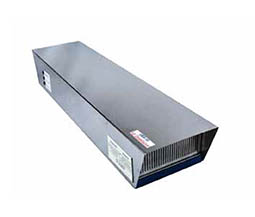Chemical Free & Filter Free Sterilisation
Why Sterilisation ?
Case Study: Hospital
Hospital Acquired Infections (HAIs) are among the most common complications of hospital care, leading to high morbidity and mortality. While WHO estimates about 7-12% HAI burden in hospitalized patients globally, with more than 1.4 million people suffering from infectious complications acquired in the hospital at any time.
COVID-19 vulnerability: the potential impact of genetic susceptibility and airborne transmission The routes of exposure that have led to this high transmissivity have been the subject of considerable discussion, notably the contribution of aerosol transmission.
At office, conference room, healthcare facilities, airports and commercial airplanes we review several real-world settings with known difficulties controlling the airborne transmission of infectious particles, while detailing the respective measures each of these industries is undertaking in its effort to ameliorate the transmission of airborne infectious diseases.
Two main mode of getting HAI is through contact and/or through airborne germs. The infection through contact can be controlled by proper housekeeping and good hand hygiene practices. The airborne microbes are difficult to control because it needs poisonous chemicals to kill microbes and the room need to be isolated during fumigation, the typical cleaning process or use HEPA filters.
Desgned to work 24/7 for
• Intensive care units, Operations theaters , Isolation wards / rooms
• Air conditioned IT centers, Conference rooms, Data centers
• Hotels, Airports, Aero planes
• Doctor consultation rooms, Sterilized isolation room at homes for covid patients
Sterilisation
Many methods are available to Sterilise air in the hospitals:
Using chemicals
HEPA filter
UVC
a) Carcinogenicity of UVC
b) Limited working radius of UVC
Like the chemical Sterilisation, the microbe count will be cyclical.
Chemical Free Deodorization
Bad odour generated through microorganism activity or other organic source is an issue that hospitals and hotels need to deal with. Most of the odour is caused by volatile organic compounds (VOC).
There are two different methods of odour control:
Masking odour control and Reactive odour control.
Masking odour control
Masking odour controlis done by spraying compounds/chemicals with a pleasant odour like perfumes to mask the bad odour. Here the odour is not eliminated but just masked by a higher odiferous compounds/chemicals.
Reactive odour control
In reactive odour control, the VOC's are reacted to form high molecular weight, non-volatile compounds, or the VOC's are oxidised whereby the odour is eliminated. The preferred method is reactive odour control and not the masking odour control. Viroblitz utilises reactive odour control technology by oxidising the VOC.
Uniqueness of Viroblitz Steriliser / Deodorizer
- Viroblitz offers a completely new approach to air Sterilisationin hospitals - No
 chemicals & No HEPA filters
chemicals & No HEPA filters - Replaces HEPA filters, Fumigation and activated carbon filters
- Viroblitz kills germs - HEPA filters only isolate them
- Removes germs and odour - causing organic molecules by oxidising them to carbon dioxide
- Reduces air exchange rates and lowers the power consumption of air conditioning
- Always keeps the germ count very low, not just cyclical like fumigation or UVC lamps
- Uninterrupted Sterilisation- no need to vacate the room during Sterilisation
- Does not affect other equipment in the room
- Offers more Sterilisationpower than UVC
- Does not produce ozone
- Ensures Sterilisationin just 0.156 seconds
- Viroblitz is recommended for closed rooms with forced air circulation
How it works ?
Step 1
Generate Valance B and Holes (VBH) in photocatalyst using light as energy source.
Generate Hydroxy radicals (second highest oxidation power known in Chemistry) at the VBH.
Step 3
Oxidise organic compounds (including Microbes and VOC) in the air.


